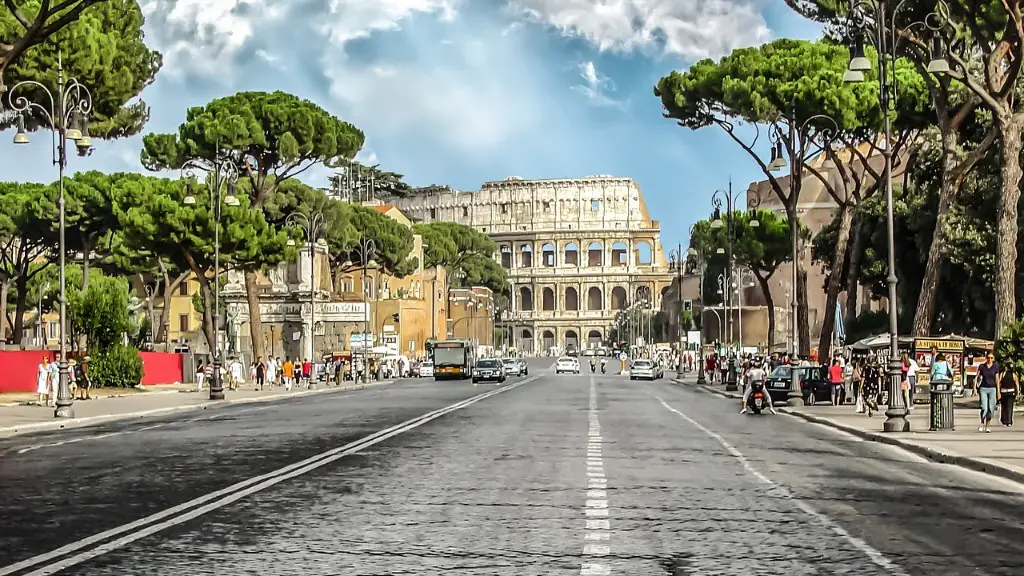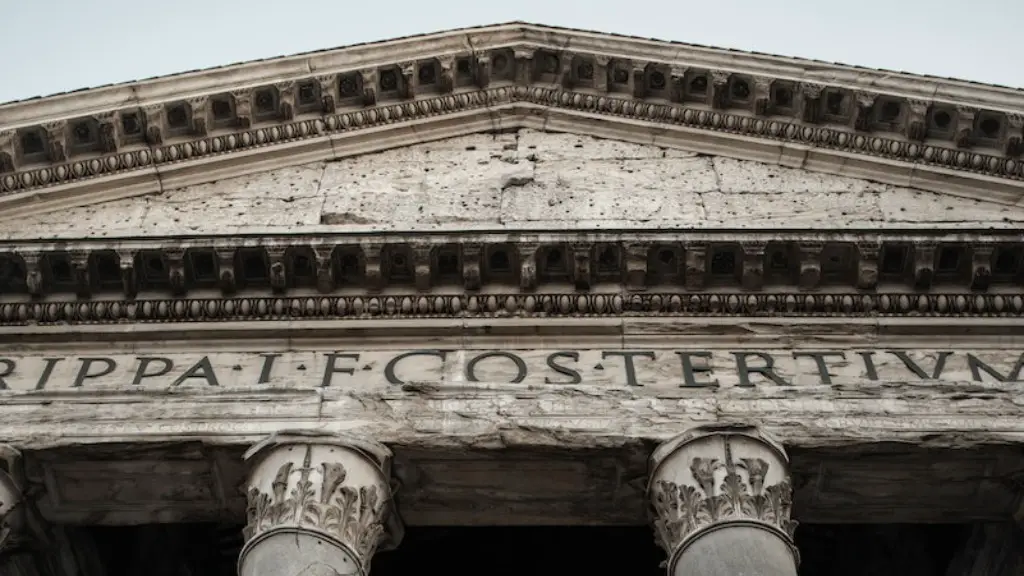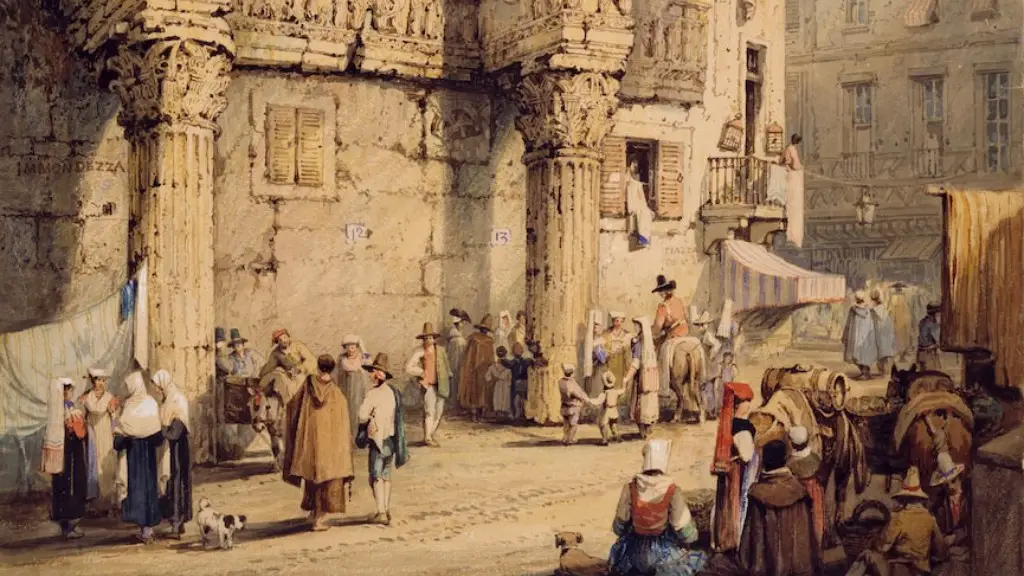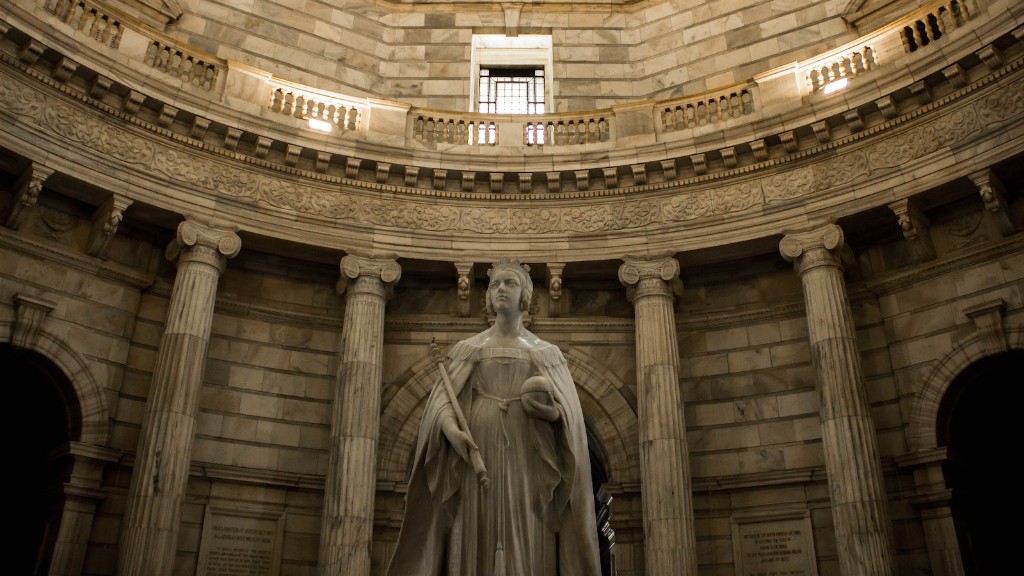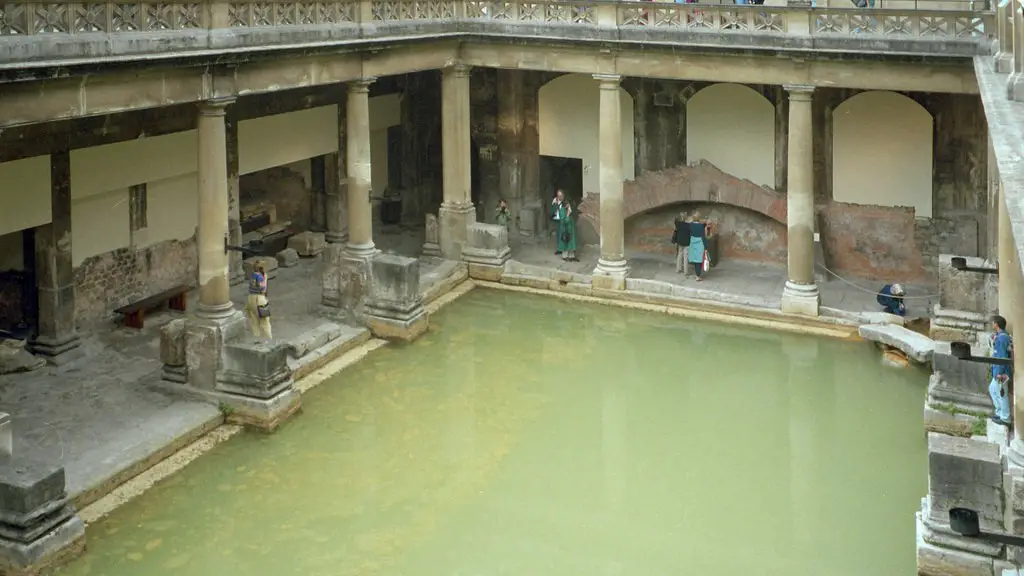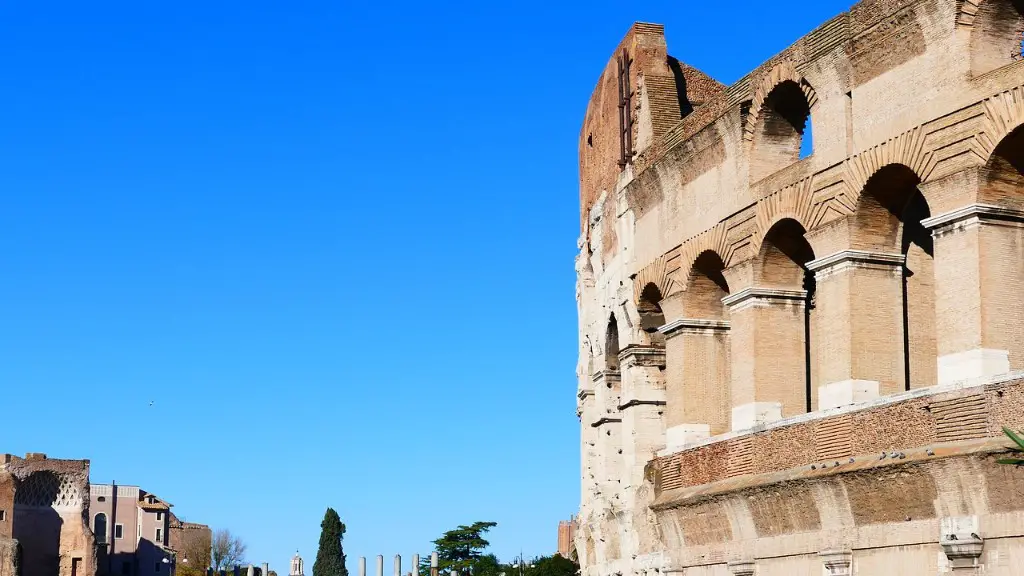The Celts
The ancient Romans were often at war with the Celtic people, who were a clutch of tribes living around Rome to the north, west and east. These Celts had a deep-seated fear of the Romans who were a technologically advanced civilization compared to them and were feared to be totally ruthless in warfare. The Celts would often ravage the edges of the Roman territories, hoping to discourage any further expansion and also hoping to obtain booty in the form of resources, weapons and slaves. In response, the Romans would march against them with their heavily armoured legionaries, meeting their foes in bloody and dangerous one-on-one battles.
At other times, the Celts formed alliances with the Romans to fight enemies. During this period, the Romans and Celts would fight together against enemies such as the Germanic tribes. The Romans admired the Celtic bravery and feared their ferocity. This combination enabled them to win many battles and acquire vast swaths of territory in short periods of time.
At other times, the Celts fought amongst themselves, for control of different areas. During this period, the Romans would try to remain neutral and focus their efforts on the consolidation of their own territories. This was the period when the famed Roman walls, roads, and monuments were erected.
The most famous and costly wars between the Romans and Celts were led by a Celtic warrior queen named Boudicca. She lead her people in a revolt against Roman rule that resulted in two of the largest battles in the history of that period, both of which were won by the Celts. Eventually, though, the Romans would prevail in other battles, incorporating the Celts into the Roman civilization and subjecting them to Roman control.
Greeks
The ancient Romans also fought against the Greeks throughout history. In the conquest of the Mediterranean world, Rome frequently encountered Greek cities which fiercely resisted its advances. As a result, the Roman army was significantly tested and the Roman war machine was strained to its full capacity. The Romans triumphed over the Greeks who often fell in battle to the Romans due to their disunity and lack of military organization, despite their legendary combat prowess.
In most cases, when a city or principality was defeated, its population suffered from war-related suffering and privations. But the Roman Empire was a civilized one, and it recognized the violence between it and its enemies was born of conquest, not war crimes. The Romans often adopted, adopted customs, and sent representatives to educate their foes in Roman ways. Thus the Romans were able to maintain a healthy relationship with their defeated opponents.
One of the most remarkable moments of ancient Roman-Greek relations was the Battle of Pydna in 168 BC, where the Roman legions won a decisive victory over the armies of the Greek city of Macedon. This marked the official Roman conquest of the Greek peninsula and provided Rome’s access to the rich and diverse cultures of the east.
The Roman-Greek wars would eventually end with the incorporation of the Greek peninsula into the Roman domain. The Greeks were able to retain much of their autonomy and distributed the newly established Roman administration throughout the region. This laid the foundation for the eventual spread of Roman culture and language throughout the Mediterranean world.
Carthaginians
The ancient Romans also fought against the Carthaginians – a civilization that existed in modern-day Tunisia, Algeria, and Morocco. The Romans were naturally hostile to the large and powerful Carthaginian Empire which was threatening to extend its influence over the Middle East and Mediterranean Sea. The greatest conflict between the two empires was known as the Punic Wars, which eventually ended in the complete destruction of the Carthaginian Empire by the Romans.
The Punic Wars had been raging for over half a century, and both sides had suffered huge casualties and destruction. Eventually, the Romans were able to prevail and carve out the Punic (Protectorate) Provinces from the dissolved Empire, pushing the Carthaginians out from their home in North Africa. This expansion allowed them to control all the trade routes in the region and access resources such as grain and olive oil.
The Punic Wars also demonstrated the brilliance of one of Rome’s great generals, Scipio Africanus. Not only did he win some of Rome’s most celebrated victories against the Carthaginian general Hannibal, he also changed the face of Roman warfare, introducing concepts such as flanking maneuvers, siege warfare, and the use of naval battles. He was truly a once in a lifetime tactician.
For nearly a century after the Punic Wars, Rome flourished. Its navywas stronger than ever, its army was universally admired, and itswealth had sky-rocketed. Rome’s great victories over the armies of Carthage had further strengthened its sway of influence over the Mediterranean world.
Celtiberians
The ancient Romans also fought against the Celtiberians – a group of Celtic-speaking people from the Iberian Peninsula. Seeking to expand their empire, the Romans advanced into the region, eventually clashing with the Celtiberians in a series of battles that culminated in the wars of 139–136 BC and the invasion of Spain by Publius Cornelius Scipio Aemilianus.
When the Romans arrived in the peninsula they were met with fierce resistance from the Celtiberians, who were using guerrilla tactics to prevent them from expanding further. This resistance was eventually overcome bypublish cruelty, bribery and the sheer ruthlessness of Roman military tactics, leading to the conquest of most of Spain by the Romans. Although the Celtiberians were defeated, they continued to mount occasional raids against Roman forces, but were ultimately unable to halt the progress of the Roman Empire in Spain.
The Celtiberians had long been renowned for their fierceness in battle. Their skill in hand-to-hand combat, their understanding of the terrain and their use of hit and run tactics added to their formidable military reputation. The Romans were cautious when dealing with them and never underestimated their strength, even in the face of overwhelming odds. They paid respect to the courage and tenacity of their opponents andalways valued the hard-earned victories secured against them.
The conquest of the Celtiberians by the Roman Empire heralded a new era for the Iberian Peninsula. Although we can never be certain of their fate, it is likely that many of them were taken as slaves and either put to work in Roman cities or sent to other regions of the empire. The Roman Empire was significantly enriched by its victories against them, and this wealth in part funded the subsequent Roman expansion into Northern Europe.
The Goths
The ancient Romans also fought against the Goths, a Germanic people who were considered the greatest foe of the Roman Empire. The Goths raided the Roman provinces, looting and pillaging settlements in their wake. The Romans found them to be a fierce and formidable enemy, whose ferocity and tenacity in battle was only matched by their ruthlessness in victory. As a result, Rome was constantly on the defensive against the Goths, whose frequent incursions posed a great threat to Roman security.
The most famous confrontation between the Romans and the Goths was the Battle of Adrianople in 378 AD. It was one of the largest battles of antiquity, and marked the beginning of the end for the Roman Empire. The Goths routed the Roman forces due to the leadership of their King, Alaric the Visigoth, who demonstrated a level of military strategy and organization that had not been seen before. The victory of the Goths established them as the dominant power in the Mediterranean, leading to their eventual sack of Rome in 410 AD.
Although the Goths were eventually defeated by the Romans, their legacy still lives on. Gothic architecture is one of Europe’s most prominent cultural contributions and is still popular today. The Goths also brought about a sea-change in warfare as their tactics and strategies influenced theart of warfare for centuries to come.
The Romans’ encounters with the Goths were some of the most significant and consequential of their era, and their clashes would shape the course of history and the Roman world-view. Even now, these battles still hold a strong place in the minds of many, standing as a testament to the prowess and mettle of both the Romans and the Goths.
The Picts
The ancient Romans also fought against the Picts. These were Gaelic-speaking people who lived in what is now Scotland and were renowned for their ferocity and strength in battle. The Picts were not unified but several kingdoms could form alliances and fight together against the Roman legions invading from the south.
The most famous example of the Picts resistance against the Romans was the Battle of Mons Graupius in 83 AD. The Picts, led by the warrior Calgacus, managed to fight back against the Romans even in the face of overwhelming odds. In the end, however, the Romans triumphed over the Picts and established their hegemony over the North of Britain.
Despite this, the Picts remained a formidable force in the North for several centuries afterwards. They were renowned for their skill in battle, their ability to survive in tough climates and their ability to build complex hill-fortresses and marsh-sanctuaries where they could retreat and fight against invaders. Roman-Pictish relations were generally very tense and the Picts were often seen as a major threat to the stability of the Roman Empire in Britain.
The fall of the Roman Empire also brought to a close their conflict with the Picts, who eventually amalgamatedas the kingdom of Alba and became one of the key powers in early medieval Britain. The Picts’ fierce pride, fierce courage and resourcefulness in battle had long made them the bane of the Romans in Britain, and these qualities would continue to mark them out for centuries afterwards.
The Persians
The ancient Romans also fought against the Persians, who were the principal power in the Middle East. The Romans and Persians clashed often throughout their history, and the Romans frequently had to contend with Persian invasions of their territory and their allies. While the Persians mostly employed naval forces to expand their territory, the Romans often had to use land forces to repel them.
The two sides clashed in a series of wars over various territories, including Syria and Mesopotamia. The Persia-Roman wars, however, were largely resolved through treaty and agreement rather than total conflict. The Romans were never able to totally defeat the Persians, but the Persians were also never able to gain a decisive victory either.
Even though the battles between the two empires never reached a decisive end, they provided valuable lessons for both sides. Rome learned the importance of strategic planning and diplomacy when dealing with an enemy, while Persia gained an understanding of the sheer power of the Roman military.
The Persians also introduced the world to their own military innovations, such as horse-drawn chariots and composite bows, which would find use both in Persian armies and Roman legions for centuries to come. The Romans’ wars against the Persians played an important role in the development of their own military tactics and strategies, as well as their diplomatic methods.
The Dacians
The ancient Romans also fought against the Dacians, a people inhabiting what is now Romania. These people were driven out of their homeland by the Romans and were scattered to other regions throughout the Roman conquest. As part of their mission to spread their civilization into the region, the Romans clashed frequently with the Dacians, often with devastating consequences.
The Romans were forced to fight some of their bloodiest battles in the region, which were bitterly contested between the two sides. The Dacians managed to hold off Roman armies thanks to their superior knowledge of the terrain and their military intelligence gained through the use of spies. This meant that the Roman armies were often at a disadvantage despite their superior numbers and tactics.
The Dacians also put up a great fight against the Roman general Trajan during the Dacian Wars. Thanks to an effective scorched earth policy and the stalwart courage of their warriors, the Dacians were able to repel the Roman offensive, though they were ultimately defeated by the Romans in 106 AD.
The Roman-Dacian wars may have been won by the Romans, but the Dacians left an indelible mark on Roman
